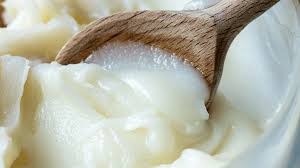
Why Beef Tallow is Healthier than Seed Oils: A Return to Natural, Stable Fats
In the modern health-conscious world, we're increasingly careful about what we eat, focusing on the sources and quality of our food. One of the more debated topics today is cooking oils. Many households rely on seed oils like canola, sunflower, or soybean oil, often believing they are a healthier alternative to animal fats. However, there’s a growing movement toward the use of beef tallow, an age-old cooking fat, for those seeking clean, natural, and healthier options. Let's explore why beef tallow is a healthier choice compared to seed oils.
1. Beef Tallow: A Stable and Natural Fat
Beef tallow, the rendered fat from cows, was once a staple in kitchens around the world. It’s composed primarily of saturated fats, which are known for their stability at high temperatures. This stability makes tallow particularly ideal for frying and cooking because it resists oxidation.
Oxidation occurs when oils break down under heat, forming harmful byproducts like free radicals. Free radicals are unstable molecules that can cause damage to cells, promoting inflammation and contributing to chronic diseases. Seed oils, particularly those high in polyunsaturated fats (PUFAs), such as soybean, corn, and sunflower oils, are highly prone to oxidation when heated, making them a riskier choice for cooking.
In contrast, the structure of saturated fats in beef tallow allows it to withstand high cooking temperatures without breaking down, ensuring that fewer harmful byproducts are created during the cooking process.
2. Seed Oils are Highly Processed
One of the biggest differences between tallow and seed oils lies in how they are produced. Beef tallow is a natural product, made by simply rendering beef fat. This minimal processing retains its nutrient profile and natural structure. It's an ancestral food that humans have consumed for centuries.
On the other hand, seed oils undergo a long, industrial process that often includes chemical extraction, bleaching, and deodorization. This means that seed oils are not only heavily processed but also can contain residues from the chemicals used in the extraction process. Moreover, the process itself alters the oils’ natural structure, potentially making them more harmful to consume.
3. The Omega-6 to Omega-3 Imbalance
Seed oils are typically high in omega-6 fatty acids, a type of polyunsaturated fat. While omega-6s are essential in small amounts, the modern diet is often heavily skewed toward excessive consumption of omega-6s, leading to an imbalance. A high intake of omega-6s, especially without sufficient omega-3 fatty acids (found in foods like fatty fish), can promote chronic inflammation in the body.
Beef tallow, by contrast, contains a more balanced mix of fatty acids, with a lower omega-6 content compared to seed oils. This balance helps support healthier inflammatory responses and may contribute to a lower risk of chronic inflammatory conditions, such as heart disease, arthritis, and certain cancers.
4. Nutritional Benefits of Beef Tallow
Beef tallow is more than just a cooking fat—it’s also a source of essential fat-soluble vitamins. Small amounts of vitamins A, D, E, and K are naturally present in beef tallow, which play vital roles in supporting the immune system, bone health, and healthy skin. Seed oils, on the other hand, typically lack these naturally occurring nutrients unless they are artificially fortified.
Tallow also contains conjugated linoleic acid (CLA), a type of fatty acid that has been shown to have potential anti-cancer and anti-inflammatory properties, as well as promoting lean body mass.
5. Saturated Fat Myths vs. Reality
For decades, saturated fats were unfairly demonized as the main culprit behind heart disease and high cholesterol levels. However, recent studies have shown that not all saturated fats are bad. In fact, saturated fats can help raise levels of HDL (good) cholesterol, which is protective against heart disease. Additionally, research has indicated that the relationship between saturated fat and heart disease is not as straightforward as once thought.
On the other hand, seed oils, once praised for their unsaturated fat content, have been shown to potentially lower HDL cholesterol and contribute to the oxidation of LDL (bad) cholesterol, which may actually increase the risk of heart disease.
6. Satiating and Versatile
Cooking with beef tallow can make meals more satiating. Because saturated fats are more satisfying, they help keep you fuller longer, potentially reducing the need to snack or overeat between meals. This is especially beneficial for those looking to manage weight or maintain a balanced diet.
Additionally, beef tallow’s high smoke point makes it incredibly versatile in the kitchen. Whether you’re roasting vegetables, frying foods, or even baking, tallow can be used without worrying about harmful oxidation.
A Return to Traditional, Natural Fats
Choosing beef tallow over seed oils is not just about following trends—it's about going back to more traditional, natural, and stable fats that our bodies are better equipped to handle. The minimal processing, lower omega-6 content, stability at high heat, and nutrient profile make beef tallow a superior choice for cooking.
At Permissibles, we believe in using ingredients you can pronounce, and beef tallow fits perfectly into that philosophy. While seed oils are ubiquitous in processed foods, opting for natural fats like tallow not only aligns with our commitment to clean eating but also offers a healthier, more nourishing option for our bodies.
Incorporating beef tallow into your cooking could be one of the simplest, most impactful changes you make to improve your health and return to a more holistic way of eating.